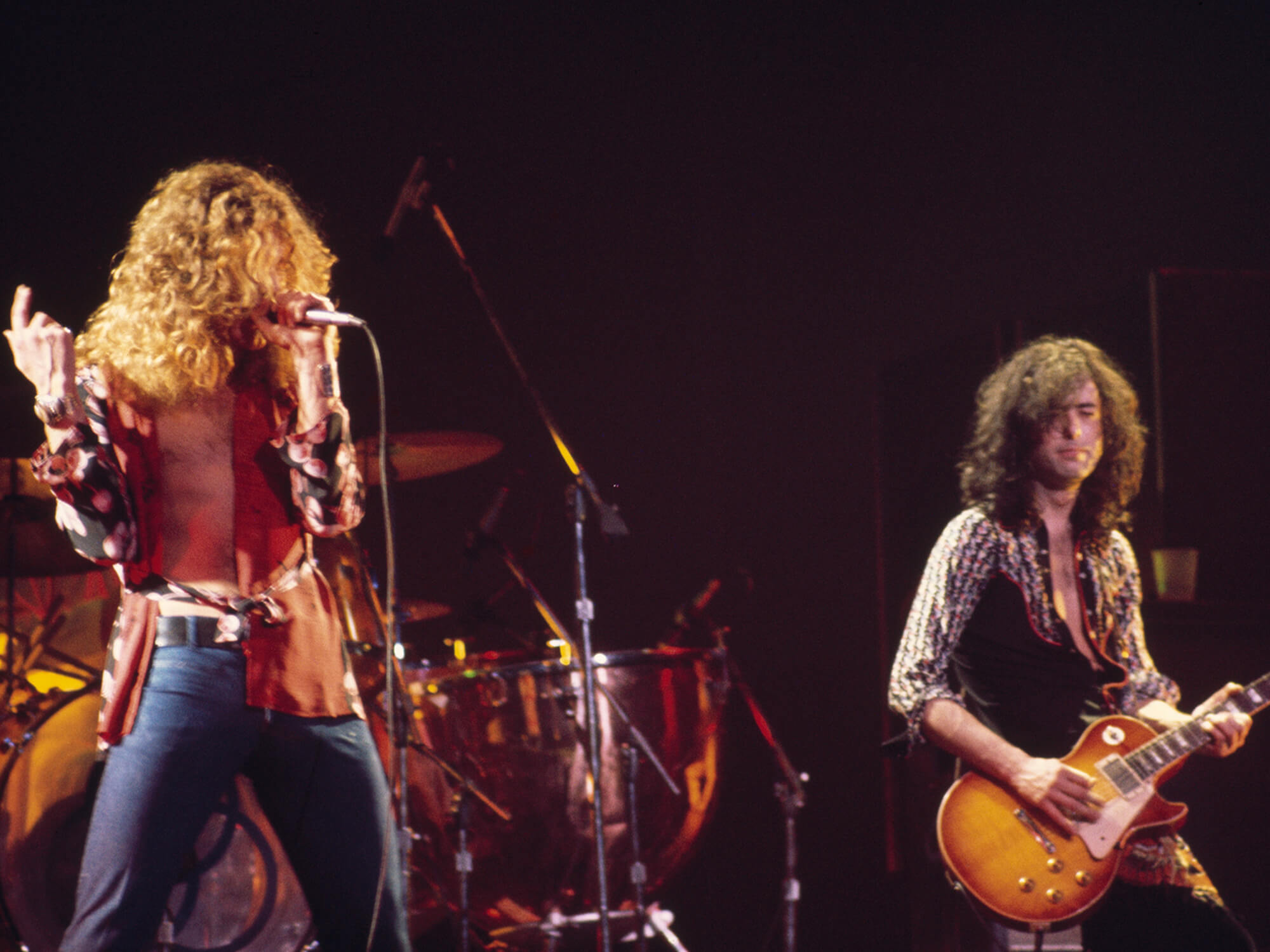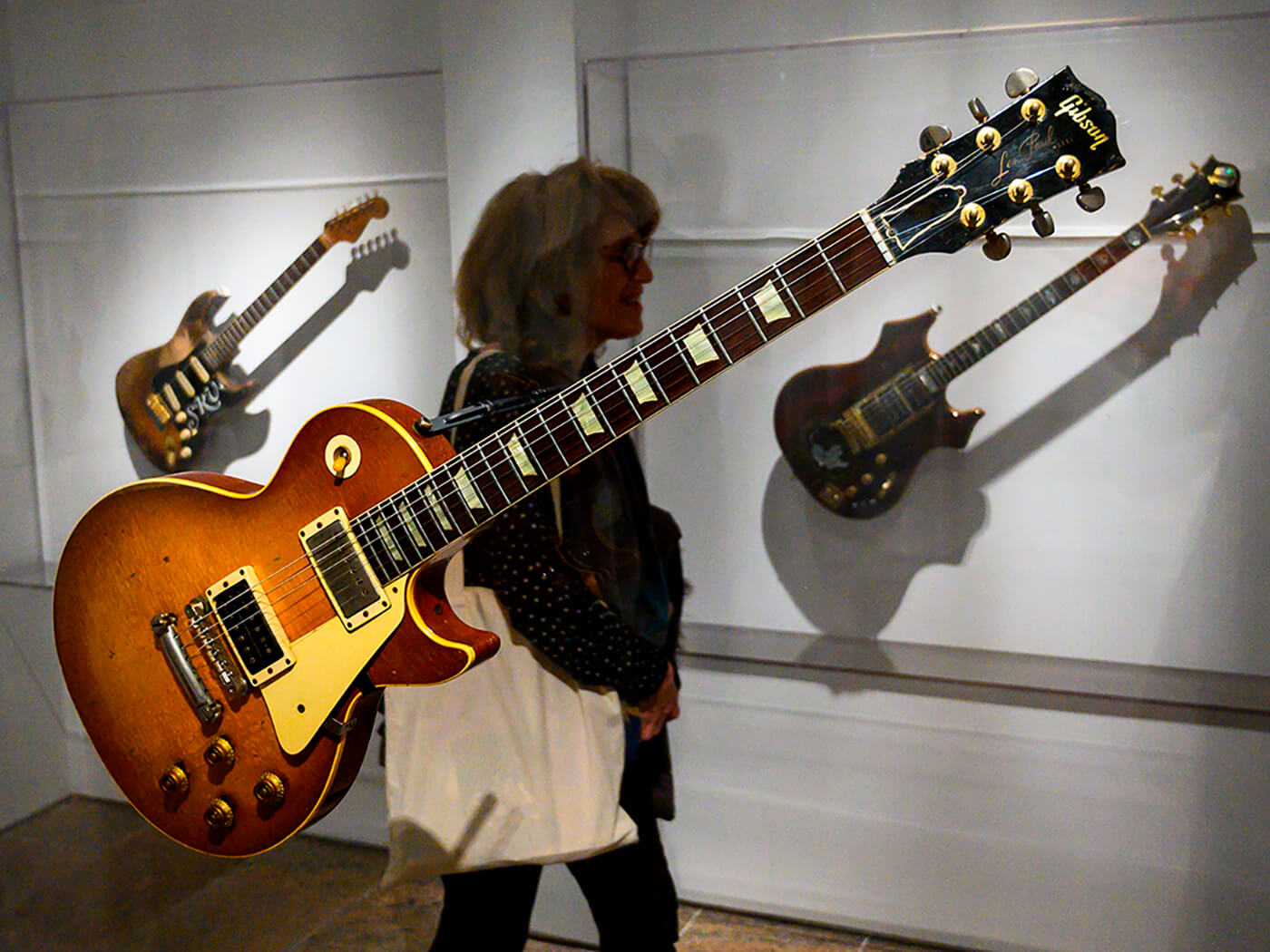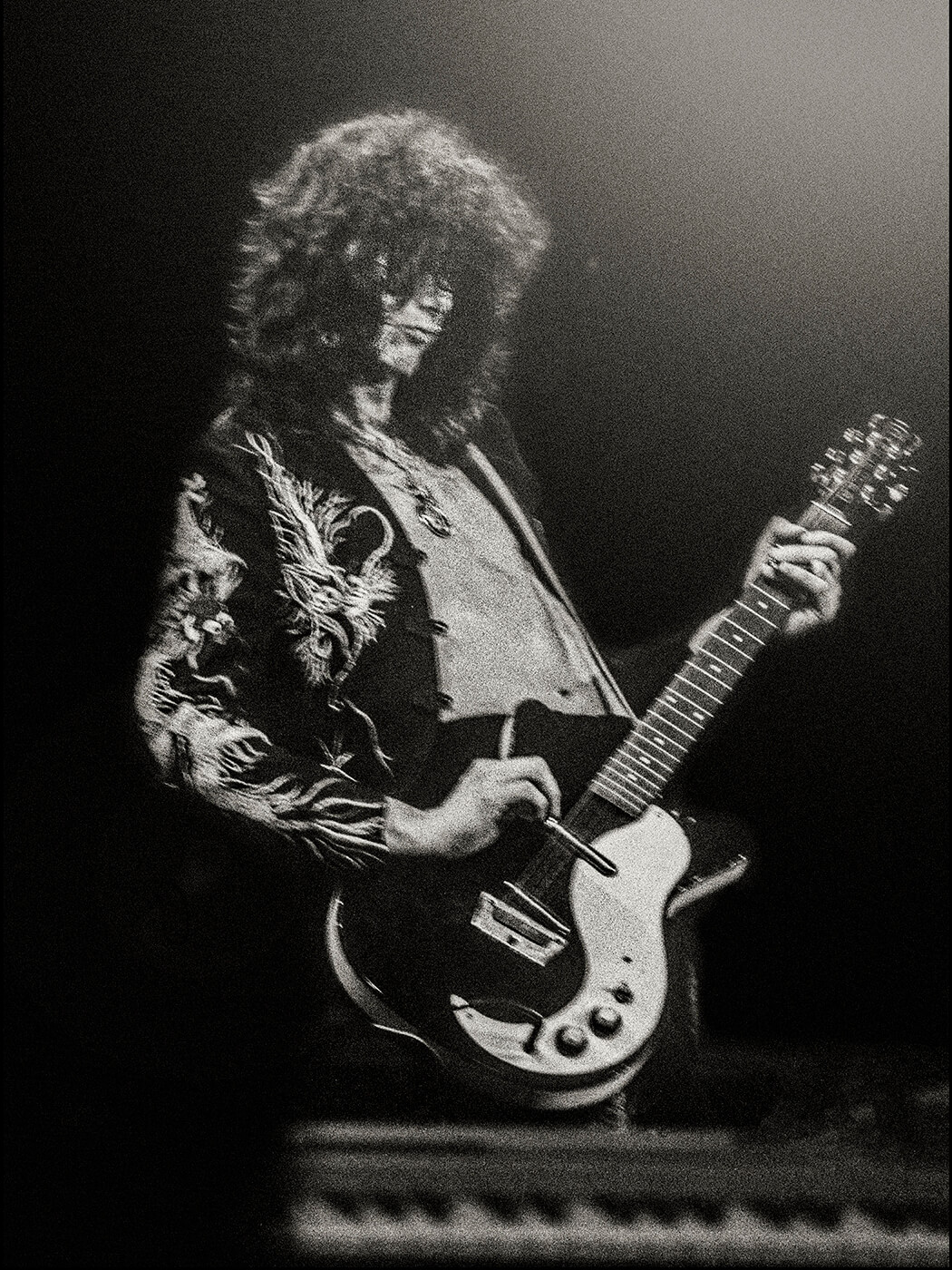Related Tags
The Gear Used By Jimmy Page on Led Zeppelin IV
Led Zeppelin IV is one of the most iconic and influential albums of all time. Here’s the gear used to make it.

Robert Plant and Jimmy Page of Led Zeppelin onstage in 1975. Image: David Warner Ellis/Redferns via Getty Images
Led Zeppelin’s iconic fourth album will forever be known as one of the greatest rock ‘n’ roll albums of all time, although ironically, it never reached the top of the Billboard chart, peaking at #2 behind Sly Stone’s There’s A Riot Goin’ On. Still, the album has been a lightning rod for mystery and conspiracy theories throughout the years. This is owed in large part to the band’s reluctance to discuss the album, including the gear used on the album, in detail. The mystery starts with what to call the album, which was left untitled, using only four symbols, some of which had roots in occult books. In this article, we will try to lift the veil as much as possible and lay out every piece of gear we know was used by Jimmy Page on the album.
The album was recorded using The Rolling Stones’ mobile recording studio at Headley Grange, a former poorhouse in Hampshire, with additional overdubs taking place at Island Studios in London.
We know that Jimmy Page used his 1958/59 “Dragon” Telecaster, which was a gift from Jeff Beck as a thanks for recommending him for the Yardbirds gig – Page acquired the guitar in 1966 and it was a large part of Led Zeppelin’s sound on their first record. It went through a few cosmetic alterations, before ultimately being adorned with the acrylic pickguard with diffraction film beneath it, and the famous artwork – a dragon that Page painted himself.

Page’s “Zoso” symbol used on the Led Zeppelin IV album comes from a chapter of an occult book (Grimoires et Rituels Magiques) called “Dragon Rouge”. When Page decided to paint the guitar, he reverted to his longstanding love of dragons. It’s a somewhat abstract painting but the head and red horns are often said to be up near the neck. It may have been this recurrence of dragon imagery that led to the Telecaster being dusted off and used on the fourth album, most notably on the solo of Stairway To Heaven. The Tele was reportedly played through a Supro amplifier – the same one that had been used on the first record.
We know that the Supro combo amp was not stock, however, what modifications were done to it remain somewhat of a mystery. Allegedly, the little combo amp started out as a 1959 Coronado model and met a tragic fate when it fell out of the back of an equipment truck. I’ve reached out to Sundragon Amps who made a limited run of amps based on Page’s original Coronado, but they have understandably been reluctant to share the specific inner workings of the amp.
However, here is what we do know: The amp was modified from a 2×10 setup to a single Oxford 12″ Alnico magnet speaker re-coned with a British-style 8-ohm cone. The amp was fitted with a new baffle and grill cloth, and it received “…small but significant circuit changes that alter the feel of the amp.” We also know the original featured hand-wound transformers and tubes made by Mullard and GE. At some point a tremolo circuit is believed to have been added as well. Predictably, the Limited Edition Sundragon recreations sold out very quickly, but they still offer a standard version of the amp.

When playing live during this era, Page mostly relied on his Marshall Super Lead, so it seems likely that most of the tracks would have included this setup, in conjunction with his newly acquired 1959 Les Paul. In April 1969, about a year and a half before recording Led Zeppelin IV, Page acquired the Les Paul from Joe Walsh while on tour. When Page bought the guitar, the neck had already been shaved down to a thinner profile. Upon purchasing the instrument, it became known as “Number One” and is probably still the guitar most closely associated with him. According to engineer, Andy Johns, Page’s Les Paul was plugged directly into the mixing console and utilized two Universal Audio 1176 compressors in series to drive the guitars. This sound is evident on Black Dog.

In addition to the Tele and Les Paul, Page also used a Fender Electric XII 12-string on Stairway To Heaven. That guitar was also used for its sister track on the next album, The Song Remains The Same. The Electric XII was only in production for four years between 1966 and 1969 and was only recently reissued by Fender in 2019. The Electric XII was reportedly plugged directly into the soundboard for the recording of Stairway…. The acoustic guitar heard on that track [as well as Going To California] was a Harmony Sovereign H1260, that according to the serial number, was built in 1962. This acoustic had been a guitar that Page would use for songwriting for the majority of Led Zeppelin’s career, although when he would enter the studio, he would often use different acoustics to record with, that was until it came time to record Led Zeppelin III. The Harmony was used for the majority of the acoustic parts on that record in addition to being used on the fourth album.

Elsewhere on the album, Page used a 1961 Danelectro 3021/DC59 that he bought back in 1963 when he was still doing a lot of session work. He used it in 1967 on an Yardbirds song called White Summer and the guitar made some appearances on Led Zeppelin songs like Black Mountain Side [from the first record] before being brought out in 1971 for When The Levee Breaks. It would also famously be used later on Kashmir and In My Time of Dying. The Danelectro was Page’s go-to guitar for alternative tunings, particularly one he called “Celtic Tuning” which most of us know as “DADGAD”. As far as we know, the guitar was mostly stock aside from the stock bridge being replaced with Leo Quan Badass bridge [although we are not sure when that was done, we do know that is how the guitar sits today.]
The album also showcases the first time Jimmy Page played mandolin on a Led Zeppelin record on The Battle of Evermore. There is a lot more that can be said about the album’s engineering and production that were integral parts of the album’s sound. The album remains a high-water mark for many tone-chasers in the music industry.
